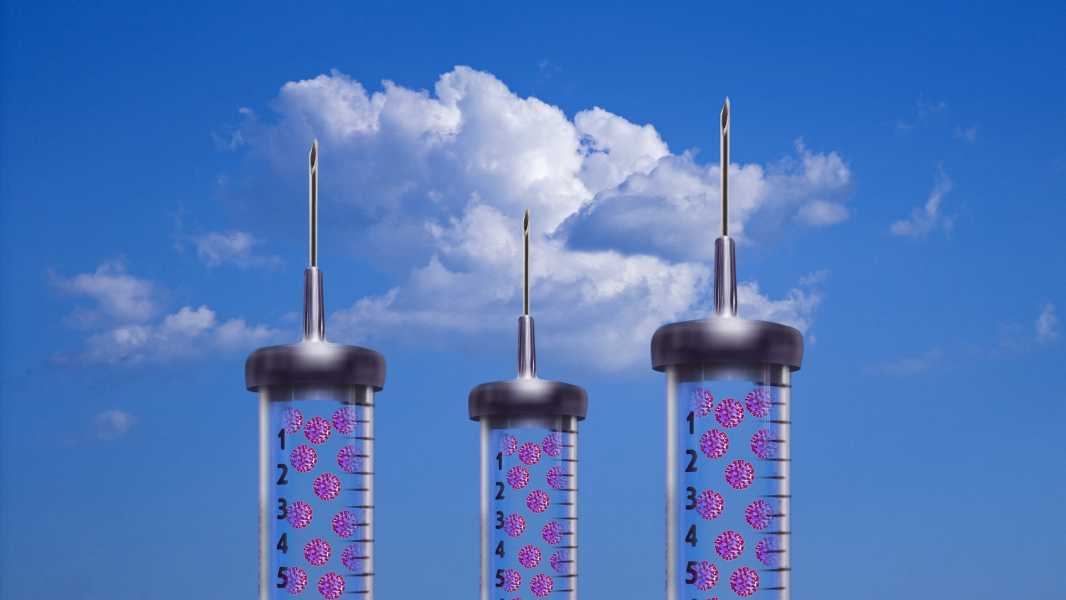
mRNA technology has gained attention during the COVID-19 pandemic, but it has actually been in development for decades before the event. (Image credit: Maciej Toporowicz, New York via Getty Images)
Many first heard about mRNA vaccines during the coronavirus pandemic, when Pfizer-BioNTech and Moderna introduced their COVID-19 vaccines. The Pfizer-BioNTech vaccine was the first COVID-19 vaccine to receive emergency authorization in the United States, and it later became the first mRNA vaccine to be fully approved by the U.S. Food and Drug Administration (FDA).
Although these initial developments occurred during a pandemic, mRNA-based vaccines had been in development for years before COVID-19 emerged.
Looking to the future, it is likely that they will continue to play an important role in the prevention and even treatment of other diseases.
So what are mRNA vaccines and how do they work?
How do mRNA vaccines work?
mRNA vaccines train the immune system to recognize specific proteins commonly found on pathogens such as viruses. To do this, they use instructions contained in an RNA molecule known as messenger RNA (mRNA).
Although these vaccines are unique in that they use mRNA, their mechanisms of protection against infectious diseases are very similar to the approaches of traditional vaccines such as measles, tetanus, and flu shots.
“All vaccines work by training your immune system to identify certain immune signals called antigens,” Dr. Vinod Balanchandran, director of the Olayan Cancer Vaccine Center at Memorial Sloan Kettering Cancer Center, told Live Science. “Antigens are proteins, or even fragments of proteins, that the body recognizes as ‘foreign.’”
Traditional vaccines train the immune system to recognize antigens from viruses or bacteria by directly exposing the body to the antigens of those microbes. A given vaccine may contain the entire microbe, but a version that has been weakened or killed to prevent disease. Alternatively, the injection may include only the portion of the microbe that contains the antigen of interest.
When the immune system identifies a new antigen, it remembers it as a potentially dangerous invader. Then, if the immune system encounters that antigen again in the context of a real infection, it can quickly activate the body’s defenses and neutralize the germ before it can multiply and cause serious disease. The most effective vaccines can prevent even mild infections.
Instead of containing any antigens, mRNA vaccines carry only the genetic instructions for the antigen of interest. These instructions are encoded in mRNA, a molecule found in all human cells. mRNA often acts as an intermediate molecule that carries blueprints for protein synthesis from the cell nucleus to the protein ribosomes.
Once an mRNA vaccine is administered, our cellular machinery uses the genetic instructions it contains to produce copies of the antigen. This allows the immune system to become familiar with the antigen, just like with any other type of vaccine.
What ingredients are included in mRNA vaccines?
In addition to the mRNA itself, mRNA vaccines contain several additional components that can vary slightly depending on the vaccine and manufacturer, but fall into a few general categories.
These include lipids or fats, which help form a protective shell around the mRNA, keeping it safe in the body and allowing it to easily enter cells. Various types of sugars, salts, acids, and chemical stabilizers may also be included to help balance the formula's acidity and maintain a stable temperature.
These components help ensure that the vaccine can perform its function before the drug breaks down in the body.
How many mRNA vaccines have been approved?
Currently, the only mRNA vaccines approved are
Sourse: www.livescience.com





